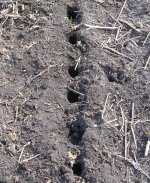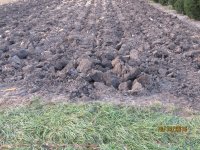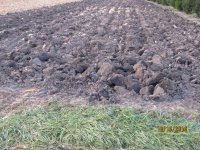sixdogs
Super Star Member
- Joined
- Dec 8, 2007
- Messages
- 13,185
- Location
- Ohio
- Tractor
- Kubota M7040, Kubota MX5100, Deere 790 TLB, Farmall Super C
Compaction is a crop stealing problem on most any clay ground. Not so much on gravel because gravel doesn't compact.
Here are some pics after I subsoiled my sweet corn ground with a subsoiler/ripper. I went 12" to 14" deep and look at the chunks of hard clay that it brought up. Imagine roots trying to grow through that. There's a five gallon bucket for comparison. Think of the water that can now run into those cracks in the ground and how soft the soil will be for the sweet corn roots to penetrate.
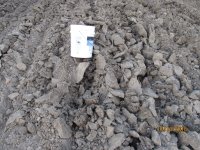
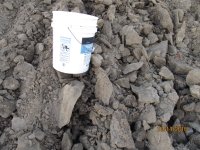
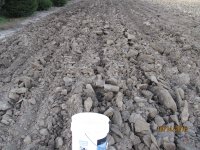
The compaction was caused by some tractor traffic and a fair amount of foot traffic. That's all. I used a three shank ripper but there are single shank models and 40 HP will pull one of those 12" or 14" deep. Deeper is no longer suggested because it can invert the soil layers and cause more harm than good.
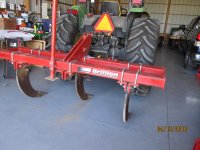
Here are some pics after I subsoiled my sweet corn ground with a subsoiler/ripper. I went 12" to 14" deep and look at the chunks of hard clay that it brought up. Imagine roots trying to grow through that. There's a five gallon bucket for comparison. Think of the water that can now run into those cracks in the ground and how soft the soil will be for the sweet corn roots to penetrate.



The compaction was caused by some tractor traffic and a fair amount of foot traffic. That's all. I used a three shank ripper but there are single shank models and 40 HP will pull one of those 12" or 14" deep. Deeper is no longer suggested because it can invert the soil layers and cause more harm than good.

